Secret Blizzard: A Russian MITM Operation Targeting Embassies (and Why Modern Identity Security Matters)
The Russian state actor known as Secret Blizzard has been targeting foreign embassies by leveraging Russia’s control over local internet infrastructure to intercept secure communications. Publicly documented reports indicate this threat actor first compromises embassy endpoint devices and modifies the device root of trust, installing a rogue Certificate Authority (CA) directly onto the compromised device. This tactic establishes persistence because even device reboots or routine security checks typically do not uncover these hidden malicious certificates.
With this foothold established, Secret Blizzard proceeds to intercept secure TLS and HTTPS traffic at the ISP level, within Russia’s telecom infrastructure, without triggering security warnings. Because the compromised device inherently trusts the attacker-installed rogue certificate, users receive no indication their secure connections have been intercepted. Secret Blizzard is thus able to silently capture authentication tokens, session cookies, and sensitive credentials, fully exploiting users’ trust in a seemingly secure session.
Traditional Authentication Security (Including FIDO) Falls Short
Traditional Authentication
The common misconception in authentication is that more factors = more security. This could not be further from the truth. Ultimately, shared secrets and phishable factors such as passwords, push notifications, one-time passcodes (OTP), and magic links can be brute forced, intercepted, and otherwise socially engineered from the user. We’ve written extensively on the shortcomings of traditional authentication and how adversarial groups exploit their fundamental vulnerabilities.
FIDO Authentication
Fast Identity Online (FIDO) is a standards organization specifically working on passwordless authentication. FIDO-based authentication is designed to prevent phishing by linking credentials specifically to trusted web domains and relying upon secure TLS connections validated by the browser. However, FIDO assumes the integrity of TLS connections, an assumption that Secret Blizzard directly undermines. In this attack scenario, compromised endpoints perceive fake connections as legitimate because of the tampered root certificate trust. Consequently, FIDO authenticators are deceived into accepting malicious authentication flows, unaware that the session is actively intercepted.
In other words, FIDO and similar traditional MFA technologies do not account for compromised device trust anchors or compromised TLS environments. This oversight enables attackers to silently intercept and hijack credentials even in environments considered resistant to conventional phishing techniques.
Beyond Identity’s Identity Security Advantage: Root of Trust Embedded Within Credentials
Modern cloud identity security platforms, notably Beyond Identity, are specifically engineered to mitigate adversary-in-the-middle threats. Here are the architectural principles that enable said mitigation.
Device-Bound, Hardware-Backed Device Credentials
With Beyond Identity’s platform, all credentials are backed using hardware (TPM2, Secure Enclaves, etc.). Signing credentials are created within hardware backed modules. These keys cannot be copied out of the modules, they never end up in your computer's memory, and they cannot be stolen from the physical device. This eliminates attacks on traditional credentials, ranging from password theft, brute force, and attacks on file-based credentials like SSH keys.
Counter Signed, Device-Bound Credentials
Beyond Identity credentials are certificates signed by both the local, device-bound key and by the Beyond Identity cloud service that authorized initial key enrollment. The credential carries its own root of trust, i.e. the key can only sign authentication challenges that originate from the Beyond Identity cloud service whose root of trust is encoded in the enrolled credential. No external trust store is needed or used for these credentials. Authentication requires proof of possession of this enrolled, countersigned credential, establishing an intrinsic root of trust embedded directly in the credential itself. This cryptographic foundation ensures authentication integrity independent of the endpoint’s local certificate trust store, removing reliance on the endpoint’s local certificate store that attackers exploit with rogue CAs or tampered trust stores.
Bidirectional Cryptographic Authentication: Independent of TLS Trust
Beyond Identity’s authentication process does not blindly inherit the browser’s TLS assumptions. Our authentication process involves mutual cryptographic validation between the device and the service. Both sides independently verify cryptographic proofs. Each enrolled device and the Beyond Identity service mutually validate one another using device-bound keys. Even if attackers compromise the TLS channel, they cannot impersonate the enrolled device because the cryptographic signature originates from a key bound to secure hardware and anchored at enrollment. This shifts the trust model away from fragile TLS assumptions and into a device-verified trust anchor.
Continuous Authentication and Fine-Grained Device Posture
Authorization is a continuous process in Beyond Identity, under the hood the system will continuously re-authenticate the user and the device. Additionally, verification that the device is secure enough for its authorization is another key tenant of Beyond Identity. In the case of Secret Blizzard, Beyond Identity continuously re-authenticates devices and enforces security posture at runtime. Traditional MFA solutions and FIDO lack both comprehensive device visibility and the ability to detect this tampering.
Conclusion: True Zero Trust Requires Device and Communication Integrity
Secret Blizzard’s advanced attacks illustrate the critical necessity of verifying both the integrity of endpoint devices and the authenticity of communication channels. Conventional authentication methods relying on TLS integrity alone are demonstrably insufficient in the face of sophisticated, state level threats.
By embedding an independent cryptographic root of trust directly within its enrolled, countersigned credentials and continuously validating device integrity, Beyond Identity delivers true zero trust authentication. Its approach counters MITM threats, ensuring verifier impersonation resistance even when facing highly capable adversaries who compromise traditional trust mechanisms.
In cybersecurity, trust must always be explicitly verified rather than implicitly assumed. Organizations must adopt robust solutions that continually validate devices and communication integrity to stay ahead of advanced persistent threats like Secret Blizzard.
The Russian state actor known as Secret Blizzard has been targeting foreign embassies by leveraging Russia’s control over local internet infrastructure to intercept secure communications. Publicly documented reports indicate this threat actor first compromises embassy endpoint devices and modifies the device root of trust, installing a rogue Certificate Authority (CA) directly onto the compromised device. This tactic establishes persistence because even device reboots or routine security checks typically do not uncover these hidden malicious certificates.
With this foothold established, Secret Blizzard proceeds to intercept secure TLS and HTTPS traffic at the ISP level, within Russia’s telecom infrastructure, without triggering security warnings. Because the compromised device inherently trusts the attacker-installed rogue certificate, users receive no indication their secure connections have been intercepted. Secret Blizzard is thus able to silently capture authentication tokens, session cookies, and sensitive credentials, fully exploiting users’ trust in a seemingly secure session.
Traditional Authentication Security (Including FIDO) Falls Short
Traditional Authentication
The common misconception in authentication is that more factors = more security. This could not be further from the truth. Ultimately, shared secrets and phishable factors such as passwords, push notifications, one-time passcodes (OTP), and magic links can be brute forced, intercepted, and otherwise socially engineered from the user. We’ve written extensively on the shortcomings of traditional authentication and how adversarial groups exploit their fundamental vulnerabilities.
FIDO Authentication
Fast Identity Online (FIDO) is a standards organization specifically working on passwordless authentication. FIDO-based authentication is designed to prevent phishing by linking credentials specifically to trusted web domains and relying upon secure TLS connections validated by the browser. However, FIDO assumes the integrity of TLS connections, an assumption that Secret Blizzard directly undermines. In this attack scenario, compromised endpoints perceive fake connections as legitimate because of the tampered root certificate trust. Consequently, FIDO authenticators are deceived into accepting malicious authentication flows, unaware that the session is actively intercepted.
In other words, FIDO and similar traditional MFA technologies do not account for compromised device trust anchors or compromised TLS environments. This oversight enables attackers to silently intercept and hijack credentials even in environments considered resistant to conventional phishing techniques.
Beyond Identity’s Identity Security Advantage: Root of Trust Embedded Within Credentials
Modern cloud identity security platforms, notably Beyond Identity, are specifically engineered to mitigate adversary-in-the-middle threats. Here are the architectural principles that enable said mitigation.
Device-Bound, Hardware-Backed Device Credentials
With Beyond Identity’s platform, all credentials are backed using hardware (TPM2, Secure Enclaves, etc.). Signing credentials are created within hardware backed modules. These keys cannot be copied out of the modules, they never end up in your computer's memory, and they cannot be stolen from the physical device. This eliminates attacks on traditional credentials, ranging from password theft, brute force, and attacks on file-based credentials like SSH keys.
Counter Signed, Device-Bound Credentials
Beyond Identity credentials are certificates signed by both the local, device-bound key and by the Beyond Identity cloud service that authorized initial key enrollment. The credential carries its own root of trust, i.e. the key can only sign authentication challenges that originate from the Beyond Identity cloud service whose root of trust is encoded in the enrolled credential. No external trust store is needed or used for these credentials. Authentication requires proof of possession of this enrolled, countersigned credential, establishing an intrinsic root of trust embedded directly in the credential itself. This cryptographic foundation ensures authentication integrity independent of the endpoint’s local certificate trust store, removing reliance on the endpoint’s local certificate store that attackers exploit with rogue CAs or tampered trust stores.
Bidirectional Cryptographic Authentication: Independent of TLS Trust
Beyond Identity’s authentication process does not blindly inherit the browser’s TLS assumptions. Our authentication process involves mutual cryptographic validation between the device and the service. Both sides independently verify cryptographic proofs. Each enrolled device and the Beyond Identity service mutually validate one another using device-bound keys. Even if attackers compromise the TLS channel, they cannot impersonate the enrolled device because the cryptographic signature originates from a key bound to secure hardware and anchored at enrollment. This shifts the trust model away from fragile TLS assumptions and into a device-verified trust anchor.
Continuous Authentication and Fine-Grained Device Posture
Authorization is a continuous process in Beyond Identity, under the hood the system will continuously re-authenticate the user and the device. Additionally, verification that the device is secure enough for its authorization is another key tenant of Beyond Identity. In the case of Secret Blizzard, Beyond Identity continuously re-authenticates devices and enforces security posture at runtime. Traditional MFA solutions and FIDO lack both comprehensive device visibility and the ability to detect this tampering.
Conclusion: True Zero Trust Requires Device and Communication Integrity
Secret Blizzard’s advanced attacks illustrate the critical necessity of verifying both the integrity of endpoint devices and the authenticity of communication channels. Conventional authentication methods relying on TLS integrity alone are demonstrably insufficient in the face of sophisticated, state level threats.
By embedding an independent cryptographic root of trust directly within its enrolled, countersigned credentials and continuously validating device integrity, Beyond Identity delivers true zero trust authentication. Its approach counters MITM threats, ensuring verifier impersonation resistance even when facing highly capable adversaries who compromise traditional trust mechanisms.
In cybersecurity, trust must always be explicitly verified rather than implicitly assumed. Organizations must adopt robust solutions that continually validate devices and communication integrity to stay ahead of advanced persistent threats like Secret Blizzard.
The Russian state actor known as Secret Blizzard has been targeting foreign embassies by leveraging Russia’s control over local internet infrastructure to intercept secure communications. Publicly documented reports indicate this threat actor first compromises embassy endpoint devices and modifies the device root of trust, installing a rogue Certificate Authority (CA) directly onto the compromised device. This tactic establishes persistence because even device reboots or routine security checks typically do not uncover these hidden malicious certificates.
With this foothold established, Secret Blizzard proceeds to intercept secure TLS and HTTPS traffic at the ISP level, within Russia’s telecom infrastructure, without triggering security warnings. Because the compromised device inherently trusts the attacker-installed rogue certificate, users receive no indication their secure connections have been intercepted. Secret Blizzard is thus able to silently capture authentication tokens, session cookies, and sensitive credentials, fully exploiting users’ trust in a seemingly secure session.
Traditional Authentication Security (Including FIDO) Falls Short
Traditional Authentication
The common misconception in authentication is that more factors = more security. This could not be further from the truth. Ultimately, shared secrets and phishable factors such as passwords, push notifications, one-time passcodes (OTP), and magic links can be brute forced, intercepted, and otherwise socially engineered from the user. We’ve written extensively on the shortcomings of traditional authentication and how adversarial groups exploit their fundamental vulnerabilities.
FIDO Authentication
Fast Identity Online (FIDO) is a standards organization specifically working on passwordless authentication. FIDO-based authentication is designed to prevent phishing by linking credentials specifically to trusted web domains and relying upon secure TLS connections validated by the browser. However, FIDO assumes the integrity of TLS connections, an assumption that Secret Blizzard directly undermines. In this attack scenario, compromised endpoints perceive fake connections as legitimate because of the tampered root certificate trust. Consequently, FIDO authenticators are deceived into accepting malicious authentication flows, unaware that the session is actively intercepted.
In other words, FIDO and similar traditional MFA technologies do not account for compromised device trust anchors or compromised TLS environments. This oversight enables attackers to silently intercept and hijack credentials even in environments considered resistant to conventional phishing techniques.
Beyond Identity’s Identity Security Advantage: Root of Trust Embedded Within Credentials
Modern cloud identity security platforms, notably Beyond Identity, are specifically engineered to mitigate adversary-in-the-middle threats. Here are the architectural principles that enable said mitigation.
Device-Bound, Hardware-Backed Device Credentials
With Beyond Identity’s platform, all credentials are backed using hardware (TPM2, Secure Enclaves, etc.). Signing credentials are created within hardware backed modules. These keys cannot be copied out of the modules, they never end up in your computer's memory, and they cannot be stolen from the physical device. This eliminates attacks on traditional credentials, ranging from password theft, brute force, and attacks on file-based credentials like SSH keys.
Counter Signed, Device-Bound Credentials
Beyond Identity credentials are certificates signed by both the local, device-bound key and by the Beyond Identity cloud service that authorized initial key enrollment. The credential carries its own root of trust, i.e. the key can only sign authentication challenges that originate from the Beyond Identity cloud service whose root of trust is encoded in the enrolled credential. No external trust store is needed or used for these credentials. Authentication requires proof of possession of this enrolled, countersigned credential, establishing an intrinsic root of trust embedded directly in the credential itself. This cryptographic foundation ensures authentication integrity independent of the endpoint’s local certificate trust store, removing reliance on the endpoint’s local certificate store that attackers exploit with rogue CAs or tampered trust stores.
Bidirectional Cryptographic Authentication: Independent of TLS Trust
Beyond Identity’s authentication process does not blindly inherit the browser’s TLS assumptions. Our authentication process involves mutual cryptographic validation between the device and the service. Both sides independently verify cryptographic proofs. Each enrolled device and the Beyond Identity service mutually validate one another using device-bound keys. Even if attackers compromise the TLS channel, they cannot impersonate the enrolled device because the cryptographic signature originates from a key bound to secure hardware and anchored at enrollment. This shifts the trust model away from fragile TLS assumptions and into a device-verified trust anchor.
Continuous Authentication and Fine-Grained Device Posture
Authorization is a continuous process in Beyond Identity, under the hood the system will continuously re-authenticate the user and the device. Additionally, verification that the device is secure enough for its authorization is another key tenant of Beyond Identity. In the case of Secret Blizzard, Beyond Identity continuously re-authenticates devices and enforces security posture at runtime. Traditional MFA solutions and FIDO lack both comprehensive device visibility and the ability to detect this tampering.
Conclusion: True Zero Trust Requires Device and Communication Integrity
Secret Blizzard’s advanced attacks illustrate the critical necessity of verifying both the integrity of endpoint devices and the authenticity of communication channels. Conventional authentication methods relying on TLS integrity alone are demonstrably insufficient in the face of sophisticated, state level threats.
By embedding an independent cryptographic root of trust directly within its enrolled, countersigned credentials and continuously validating device integrity, Beyond Identity delivers true zero trust authentication. Its approach counters MITM threats, ensuring verifier impersonation resistance even when facing highly capable adversaries who compromise traditional trust mechanisms.
In cybersecurity, trust must always be explicitly verified rather than implicitly assumed. Organizations must adopt robust solutions that continually validate devices and communication integrity to stay ahead of advanced persistent threats like Secret Blizzard.

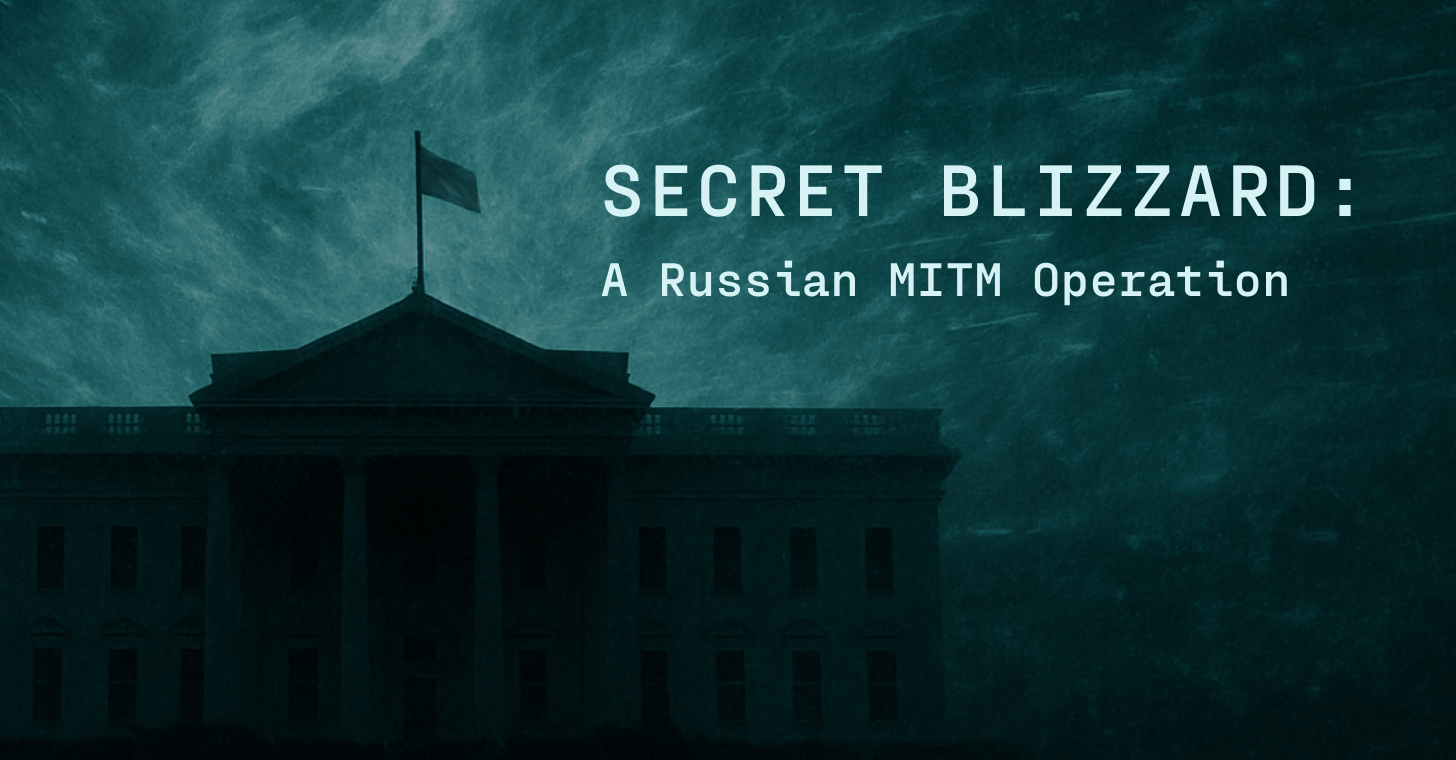







.jpg)
.jpg)
.jpg)

.jpg)
.jpg)
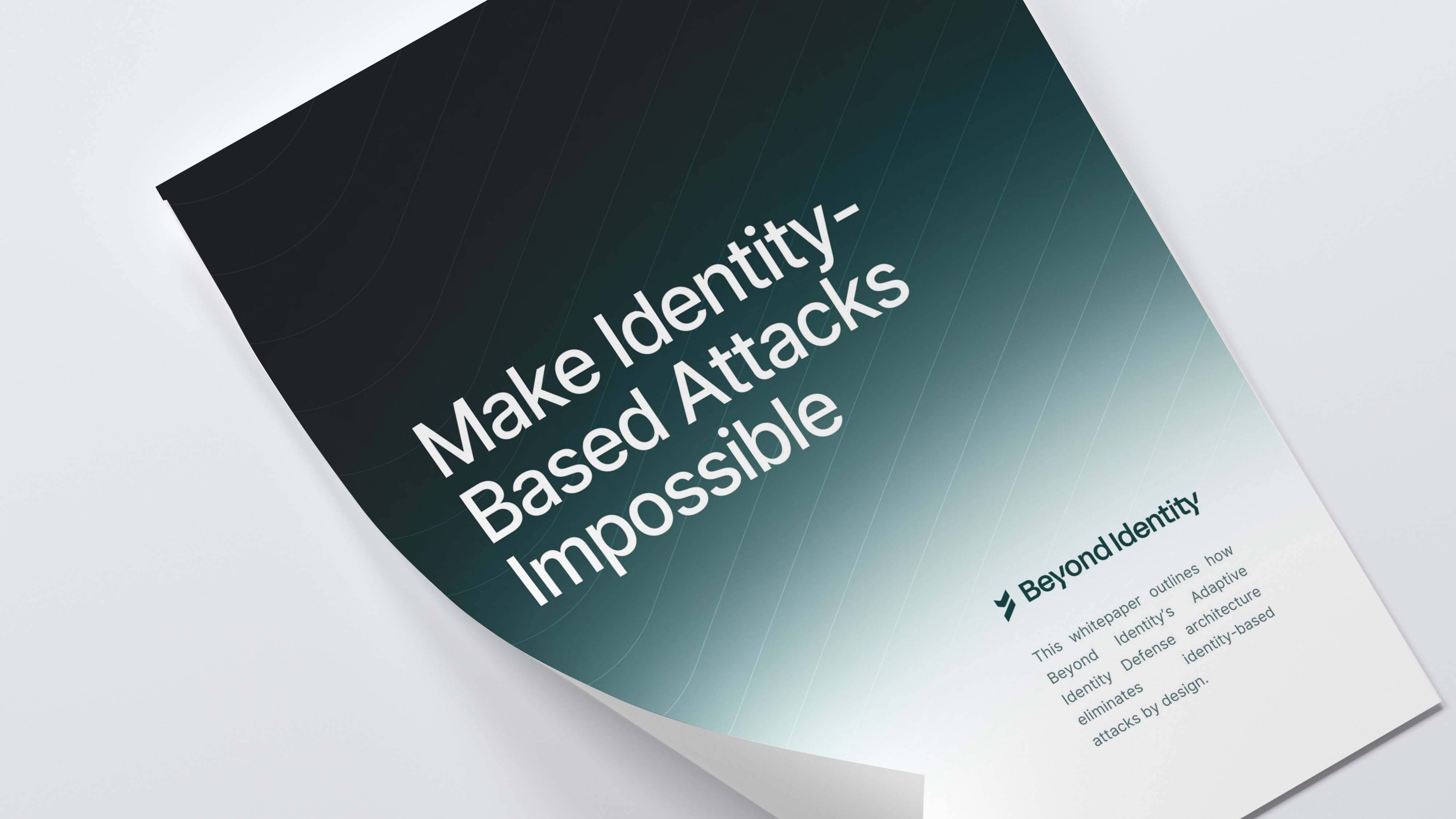
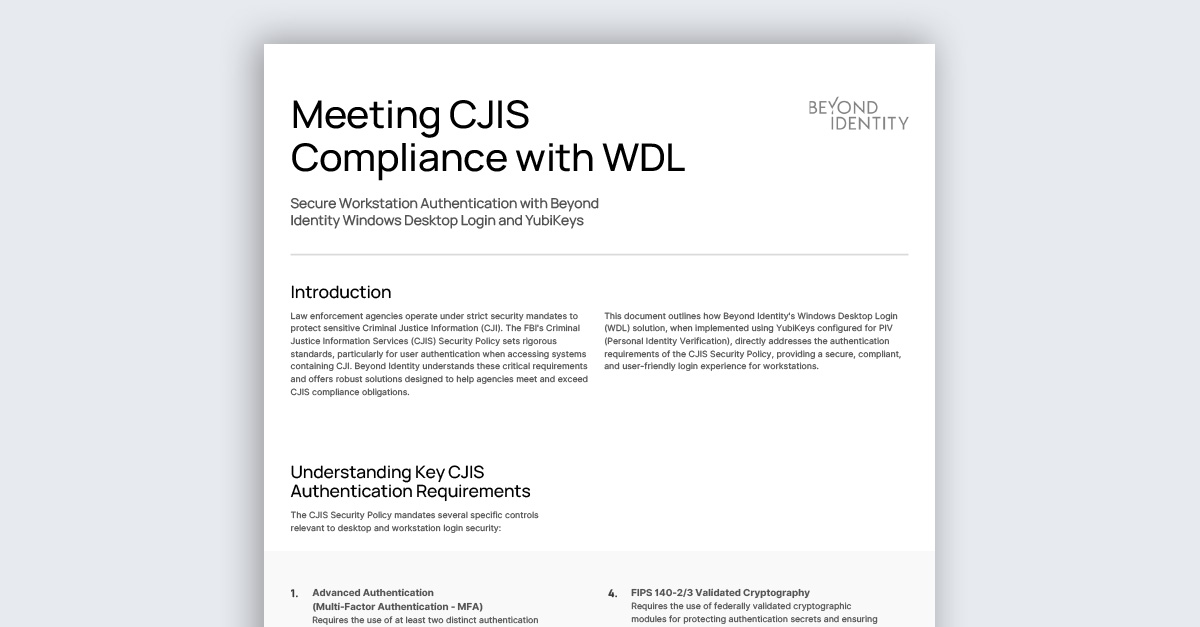
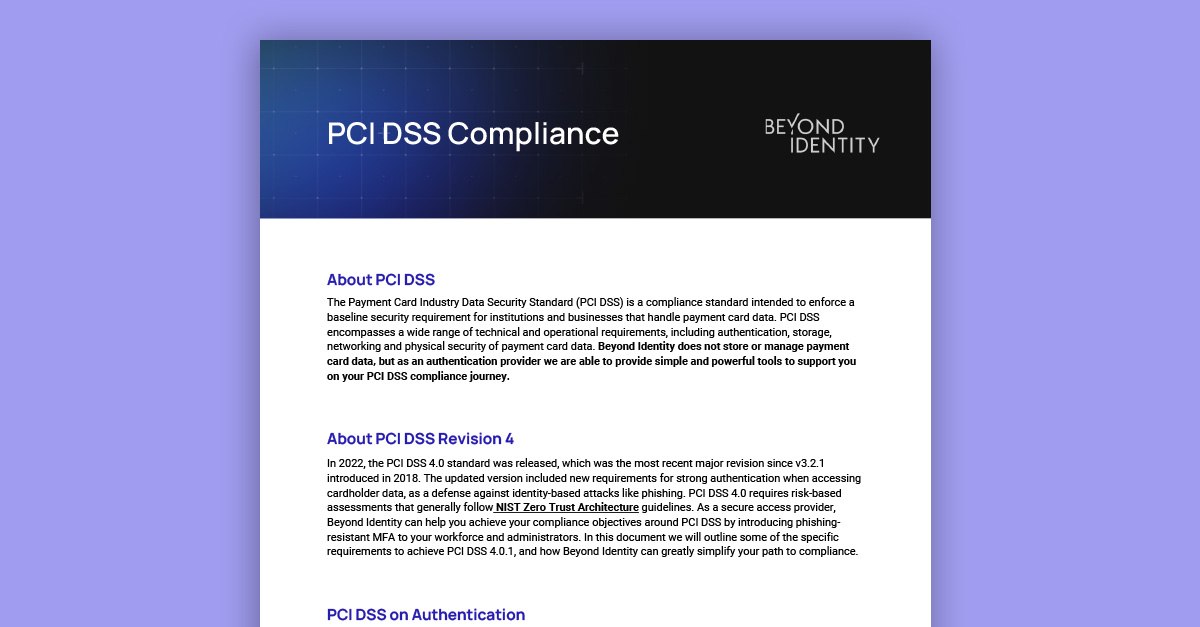
.jpeg)

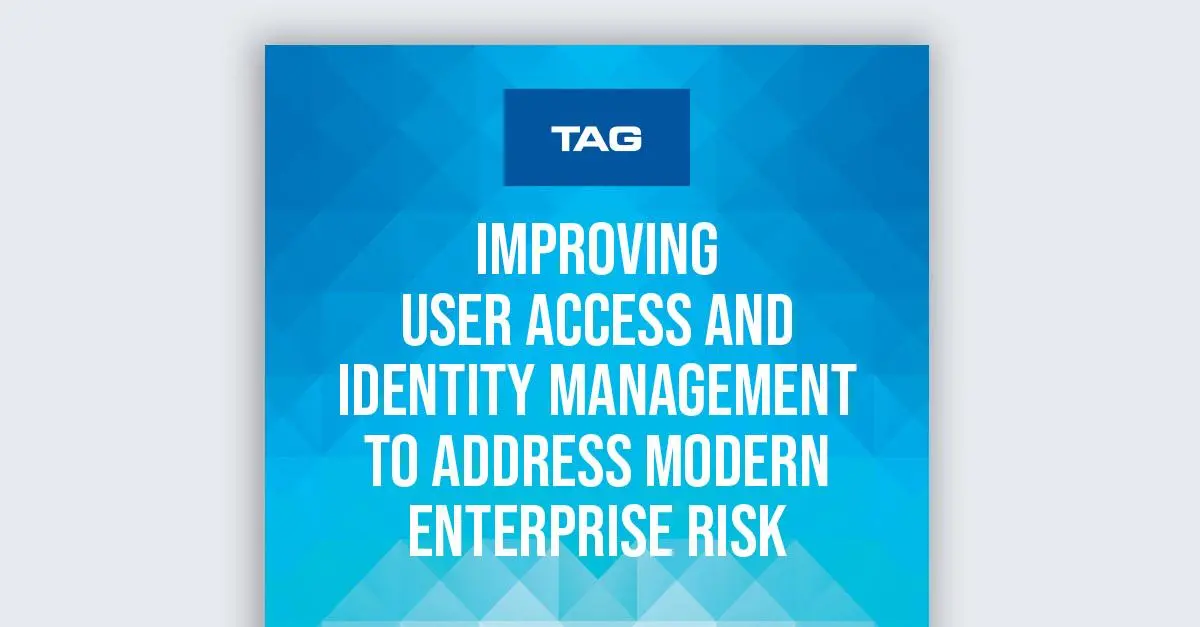
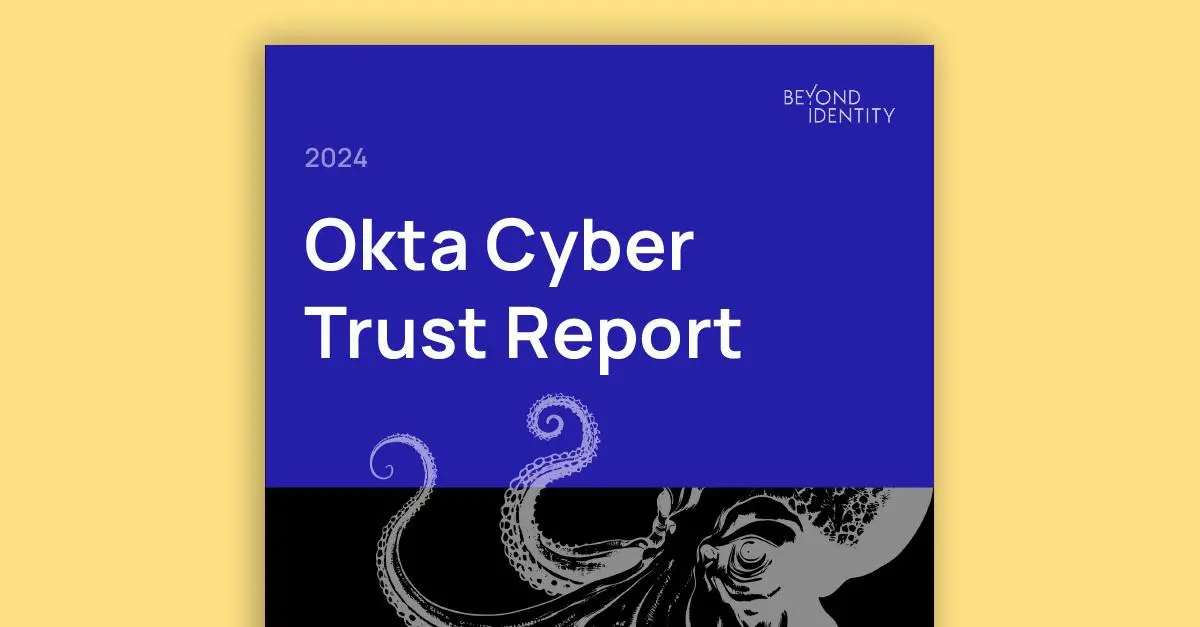



.png)

